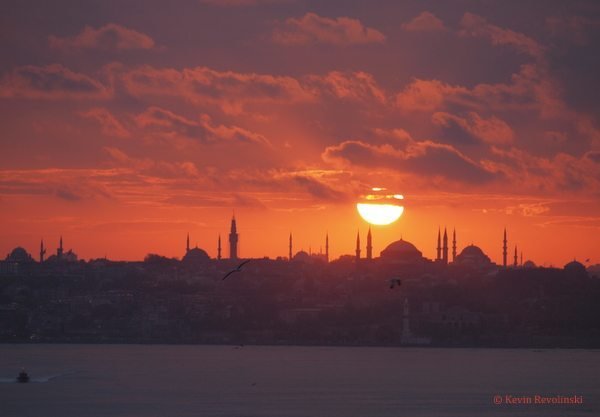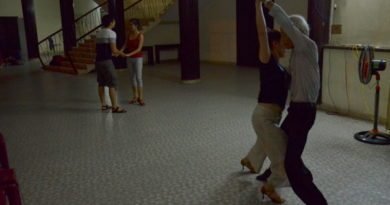Istanbul: My Favorite City
Perched on two continents and built on layers of empires and history, Istanbul invites travelers to exploration. The city once known as Constantinople harbors a mystique that combines the traditions of the East and the West and offers up sights, sounds, and smells that are certain to leave a lasting impression. And the bonus is that many of the many of the most important historical sites are all within walking distance of each other.
The best place to start is the old section of the city on the European side, Old Istanbul. Sultanahmet or the Blue Mosque, features a large central dome surrounded by smaller half domes, and the finely detailed blue-tile interior is suffused with the light from stained glass windows. Surrounded by six towering minarets, this architectural masterpiece was completed in 1616 by the order of Sultan Ahmet I. Though open to tourists, it is still an active mosque drawing the faithful and the curious alike.
Sultanahmet sits on one end of a green space with a fountain in its center opposite the structure that inspired the mosque’s construction: Hagia Sophia or Aya Sofya. Commissioned by Byzantine Emperor Justinian and completed in 537 A.D, this church with its 184-foot high dome was the largest in the world before St. Peter’s was built in Rome. Rather than destroying the many Christian mosaics, the Turks had them covered with plaster and converted the church into a mosque in 1453 when they took the city from the Byzantines. Consequently, all were not lost and some of these glittering gold mosaics have been restored.
Just behind Aya Sofia is Top Kapi Palace. From 1465 to 1853 this collection of halls surrounding a large inner courtyard served as the administrative center of the Ottoman Empire. Within are several museums featuring displays of weapons and armor, fine ceramics, and daily objects from the age of the Sultans. The treasury exhibits many of the riches of the Ottoman rulers—gold, precious stones and, notably, a magnificent bejeweled dagger. This is a nice place to have lunch or take tea looking out over the waters of the Bosphorus below.
And no walking tour of Istanbul would be complete without getting lost inside the labyrinthine passageways of the nearby Grand Bazaar. Haggle with vendors as they try to sell you Turkish crafts such as ceramics and carpets as well as metalware and fine jewelry.
 The treasures of Turkey are many and food is no exception. The best way to end a long day of walking? Settle in at one of the many fine seafood restaurants for a feast worthy of the Sultan himself. Find seafood under the Galata bridge, share some of the potent anise-flavored raki and roasted hazelnuts with a few friends.
The treasures of Turkey are many and food is no exception. The best way to end a long day of walking? Settle in at one of the many fine seafood restaurants for a feast worthy of the Sultan himself. Find seafood under the Galata bridge, share some of the potent anise-flavored raki and roasted hazelnuts with a few friends.
For lunch I’ll either get a cheap döner sandwich (I prefer the chicken to the lamb) plus a glass of ayran for a couple of lira. Or better yet, buy a loaf of fresh bread and a slab of beyaz penir and some olives (zeytin) at a deli, and take them into a courtyard, perhaps the sometimes-overlooked Süleyman Mosque, and have a picnic. (Don’t do this with alcohol though.)
End the day with a promenade along Istiklal Caddesi and perhaps some Turkish ice cream. This is a pretty good day in Istanbul, especially for first timers. But remember: you are just scratching the surface now!
This post is part of the initiative “100 cities to home swap before you die” from Knok.com.










 ORDER YOUR COPY TODAY!
ORDER YOUR COPY TODAY! ORDER YOUR COPY TODAY!
ORDER YOUR COPY TODAY!
Pingback: Top 10 places to visit in Istanbul, Turkey | Tip's Food and Travel
Kevin, what would you advise regarding travel to Istanbul given current events and the monthly bombings?